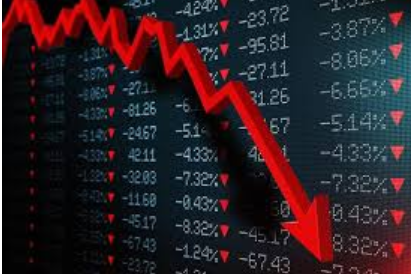Saxo Bank fokuserer på de store kursfald i mandags, efterfulgt af en korrektion på det amerikanske marked. Der er mange negative udviklinger i denne tid, f.eks. med voksende problemer på det kinesiske boligmarked, stigende olie- og gaspriser samt en kødkrise i UK, fordi slagterierne ikke kan finde nok slagteriarbejdere.
Market Quick Take
Summary: Markets were in for the worst session in months Monday in Europe and the US as the S&P 500 corrected beyond its 100-day moving average before a late and sharp rally erased the worst of the damage. Chinese mainland markets are offline for a holiday while Hong Kong traded sideways overnight amidst the ongoing Evergrande and Chinese property sector concerns. The next key risk event is the FOMC meeting and whether the Fed waxes hawkish despite market volatility over the last week.
What is our trading focus?
Nasdaq 100 (USNAS100.I) and S&P 500 (US500.I) – S&P 500 futures rallied 1.3% from yesterday’s lows into the close and have continued to push higher in today’s session trading around the 4,370 level in early European trading. That took the drawdown to 5.6% in the S&P 500 futures from the recent highs. With the VIX Index staying elevated the risk-off mode can quickly resume and we expect this week to continue to be volatile. The next resistance level for S&P 500 futures is around 4,387.
Hang Seng (HSI.I) – limited additional information on Evergrande and Hang Seng futures while dipping to new local lows intraday have bounced back somewhat stabilising the situation. Mainland Chinese investors are back tomorrow from holiday, but the big event this week is on Thursday with Evergrande’s two bond payments due. Hang Seng futures are building support around the 24,000 level with next support down around 23,200.
EURUSD – a rather quiet day yesterday for EURUSD, given the volatility spike in risky assets and the general preference for the US dollar in such conditions. Some of the support may have come from the lack of volatility in the US yield curve, as long US treasury yields dipped yesterday amidst deleveraging in risky assets, which drove JPY buying and impacted USDJPY and via that, perhaps EURUSD. This suggests that EURUSD may prove low beta to risk sentiment but could be very sensitive to any notable shift from the Fed at tomorrow’s FOMC meeting if this affects drives higher US yields, which could send EURUSD over the edge below its range low near 1.1665.
Bitcoin (BITCOIN_XBTE:xome) and Ethereum (ETHEREUM_XBTE:xome) – cryptocurrencies showed their sensitivity to general risk sentiment yesterday and capitulated through recent range support in Bitcoin near 43.5k, trading nearly all the way to 40k before bouncing back above 42k overnight. Ethereum is back poking at the 3,000 area after its own capitulation below that key level toward 2,800 overnight.
Gold (XAUUSD) only managed to find a small safe-haven bid yesterday despite falling stocks boosting a taper-transfixed bond market. The lack of impact probably due to most of the yield drop being driven by a fall in breakeven yields while real yields held steady around –1%. It highlights the current lack of momentum and interest ahead of Wednesday’s FOMC meeting. A break above $1780 is needed to stabilize the market, but with silver still at risk of breaking a key area of support at $22, a further downside risk remains.
Crude Oil (OILUSOCT21 & OILUKNOV21) trades higher after Brent manage to find support at the first available opportunity at $73.70. The bounce overnight supported by a – for now – improved risk sentiment, and more importantly the global energy crunch currently unfolding in the natural gas market, a development that is likely to drive increased demand for fuel products as substitution. In addition, Shell said 300,000 barrels of daily production from two of its largest Gulf of Mexico fields would remain idle until next year due to Hurricane Ida damage.
Safe havens rise amid stock market turmoil (IEF, TLT). Fears arising from the risk of contagion coming from Evergrande’s collapse weights on stocks, favoring safe havens in Europe and the US. Ten-year US Treasury yields dropped more than 5bps to 1.30%, and the 5s30s spread tightened to the lowest level since August 2020. We continue to believe that 10-year yields will find strong support at 1.26%, however, if the selloff intensifies yields could drop even further. We believe that there is no risk of contagion outside China, however, a slowdown in Chinese growth could seriously hinder global growth, posing a risk to Central Banks monetary policies.
European sovereign bonds rise amid the market selloff, today’s 7-year German Note auction might slow down gains (VGEA, IS0L, BTP10, GILS). Sovereign bond yields plunged in the euro area as well as in the UK. The market was fast in attributing the flight to safety to Evergrande’s collapse, however we believe that the natural gas story emerging from the UK will have a more profound and long-term impact on markets. Regardless, today Germany sells 7-year Notes through an auction. Recently, demand for German bonds has been weak, and if today the auction ends up in another technical failure, we could expect European sovereign bonds to revert part of yesterday’s gains. Contrarily, a strong auction will confirm investor’s run to safety, compressing yields further. We expect 10-year Bund yields to trade rangebound between –0.37% and –0.26%.
What is going on?
The global energy crunch in natural gas continues, with Dutch TTF natural gas (GASNLBASEOCT21) closing at a record high yesterday at €73.6/MWh, the equivalent of $25/MMBtu while regional power prices, using German next year power (POWERDEBASECAL22) also closed at a record high at €104.8/MWh. As a result, Asian LNG prices have also surged to a seasonal high with China at risk of the same energy-crunch chaos seen in Europe, with a state-run newspaper warning that coal-fired power plants may struggle to find enough fuel this winter. While Norway’s Equinor has been given permission to increase gas exports to Europe, the latest price jump came after Russia refrained from booking any additional gas transit capacity via Ukraine for October.
S&P says Evergrande default is likely. The rating agency says that the current pace of the Chinese government indicates that it is likely content with default unless the contagion risks go up for the entire housing market. The current 1-year default probability for Evergrande is 8.9% with Glencore topping out at around 6% back in early 2015 when the commodity trading firm was close to bankruptcy. As we wrote yesterday, China has the resources to mitigate and smooth the pain from the housing market stress and the most likely scenario from here is that any failing real estate developer will be folded into a SOE structure and kept alive.
Canada election: Trudeau keeps power. It’s back to square one for Justin Trudeau’s Liberal party, which emerged victorious in yesterday’s Canadian election, which looks set to hand the Liberals a minority government that is almost identical to the government prior to the snap election. CAD was higher, in part on the lack of drama, but also as risk sentiment rallied late yesterday and oil prices erased some of yesterday’s sell-off.
Lennar shares down on weaker outlook. The US homebuilder announced last night Q3 revenue of $6.94bn vs est. $7.25bn and EPS of $4.52, but it was the weaker than expected Q4 outlook that soured the mood and sent shares down 3% in extended trading. Q4 new orders were guided at 15,200-15,400 vs est. 16,660 with the main culprit being supply constraints for building materials.
UK set for meat crisis? UK slaughterhouses can’t find enough workers, leaving pig farms with nearly 100k more animals than they would normally have, and the shutdown of fertilizer plants due to high natural gas prices means that associated CO2 side production from those same plants may not be available for its use in the slaughtering and packaging process, possibly aggravating the problem and resulting in meat shortages on UK store shelves. The UK government has not yet made any move to intervene.




